全部評論: 0條


Ernesto Rosales Ramírez,秘魯工業設計師。熱衷于交通工具設計的他,從小就充滿好奇心,喜歡拆東西,并且試圖去搞清楚它們是如何工作。他認為,任何設計出來的產品脫離了人就什么都不是,所以堅持設計必須以人為中心。目前Ernesto在大眾消費品公司Belcorp Peru工作,同時開發醫療保健技術和運輸設計領域的自由職業項目。
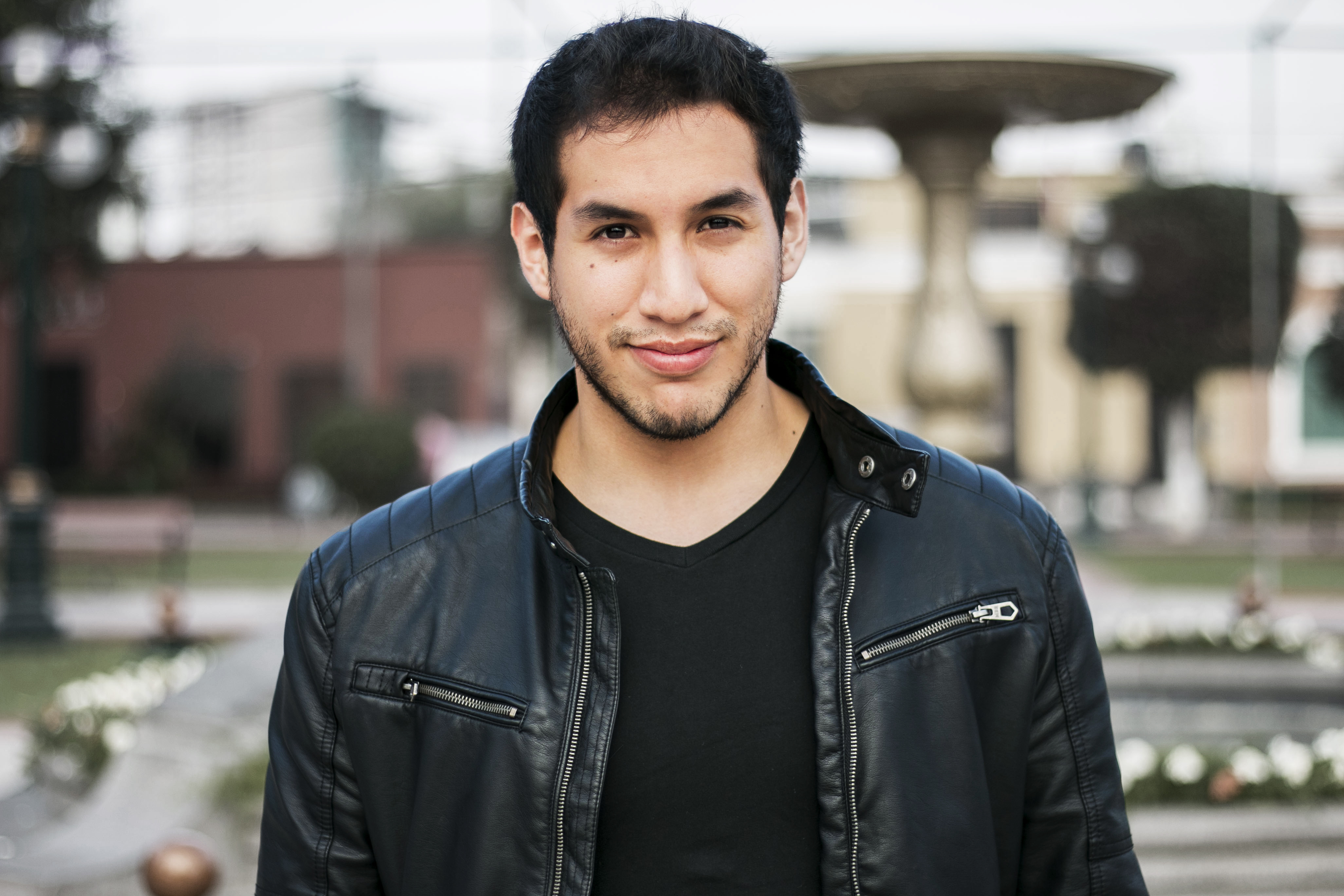
Ernesto Rosales Ramírez
Narkii:
您的多數作品都是交通工具的設計。這個領域最吸引您的是什么呢?
Most of your works are related to vehicle design. What attracts you most in this area?
Ernesto:
當我還是小孩子時,第一次騎上自行車,我就被迷住了,這個由鋁、鏈條和齒輪組成的東西竟可以讓我跑得更快,更省力。這是我第一次感受到速度所帶來愉悅感,也讓我理解了一種概念,就是交通工具作為我們身體的延伸,可以幫助我們做到超越人體限制的事情,比如飛行,或在海底游泳,或是達到非一般的速度。我熱衷于所有種類的交通工具,無論是機動還是非機動,原因除了它們所帶來的審美上的享受外,還有它們所能對社會產生的影響。舉個例子,我尤其欣賞一款車,就是印度制造商TATA Motors所生產的Tata Nano,這款車被認為是世界上最便宜的汽車。之所以有這款車,是因為印度人需要一種安全同時大家都負擔得起的交通工具,當時在印度只有5%的人擁有汽車,大部分人都開著摩托車穿行于沒有鋪混凝土的地面,一家人全部擠在一輛摩托車上的現象非常普遍。Tata在印度變成了“人民的汽車”,它是一個在材料和工藝上實現了最優化的復雜的產品。我想要設計“秘魯人的汽車”,一個具有包容性的可以滿足城市內外人們需求的產品。
When I was a child and I rode a bicycle for the first time in my life, I got fascinated to discover how an object made of aluminum, chains and sprockets could allow me to go faster and with less effort than running. This was my first approach to the pleasure for speed, which also allowed me understand the concept of a vehicle as an extension of your own body to achieve things humanly impossible like flying, or to swim in the deepest of the oceans or to reach speeds that no living being can. I’m a fan of all kind of vehicles, motorized or not, however, furthermore the taste for esthetic I feel attracted to the impact they can have in the society. For instance there is a car in particular that awakes my admiration and that is the Tata Nano from the indian manufacturer TATA Motors, considered to be the cheapest car in the world. It was born from the necessity of the indian population for a transportation mean that was safe but above all, affordable, because at that time, in India only a 5% owned a car and people move in motorcycles through non-paved roads, where it wasn’t uncommon to see whole families moving all together onboard one single linear motorcycle. The Tata became the “car of the people” in India, a complex work of engineering and design based in the optimization of materials and processes, made possible by a team of indian professionals. I would like to design the “car for the Peruvian people”, an inclusive product designed to satisfy people’s needs in and outside the city.
Narkii:
當您開始一個新的項目,您典型的設計流程是怎樣的呢?
When you start a new project, what is your typical design process?
Ernesto:
盡管設計有許多的方法論和工具,但是到最后,每個設計師都會得到自己的一套方法。我自己認為,在整個產品開發流程中,概念是基礎,這是最難的一部分,因為它定義了設計對象的功能和使命,概念的發想源自于對用戶的廣泛調查,且明確了他們的需求或是日常體驗中可以改善的可能。比如,Chicco Ride On項目中的概念是想要設計出一款“多功能且適合孩子成長不同階段”的交通工具。這個概念,正是經過了調查才得以發想出來,因為我們調查到了家長在孩子最初快速成長的幾年里需要為他們買各種不同類型的交通工具。從嬰兒推車,到嬰兒步行車,再到各種小的自行車。
說到“適合孩子成長階段的多功能汽車”,是否包含了這樣一個理念:創造一個涵蓋這些產品主要功能的小車,適應孩子們成長的需求,父母只需要投資在這一件上,充分利用了家庭空間,并且作為一個多功能玩具更容易運輸。一旦定義了概念,那么問題就來了,這些問題自然而然會帶出設計,比如:孩子的哪個成長階段最為重要?需要整合哪些功能?需要應用什么材料?為了實現這些功能需要運用什么機械原理?作為最終產品,功能與外觀都是研究用戶之后得到的結果。
Though there are many methodologies and tools to design, in the end, each designer develops his own methodology. Mine in particular has the concept as a base of the whole product developing process, being this the toughest part, because it defines the function and mission of the object to design, for reaching a concept is the result of a wide investigation focused in the users, to identify their needs or improvement opportunities on a day-to-day experience. For example, the concept developed for the Chicco Ride On Project is a “ multifunctional vehicle adaptable to the growing stages of a child “which is the resulting product of an investigation done by the family parents where it was identified their need to buy different types of vehicles for their kids through their quick development in their first years. From baby strollers, baby walkers, jumpers to different types of ride-on.
Is there when the sentence “multifunctional vehicle adaptable to the growing stages of a child “encloses the idea to create a ride-on that comprises the main functions of these products, adapting to the children’s needs as they grow and becoming in just one investment for their parents, making the most of the home space and making easier to transport as just one multifunctional toy. Once defined the concept, questions come out to allow the design build itself, like for example: Which development stages are the most important for a child? Which functions must be integrated? Which materials should be used? What mechanism must be integrated to have these funtions? Being the final product as well in functionality as in appearance the result of the user’s study.
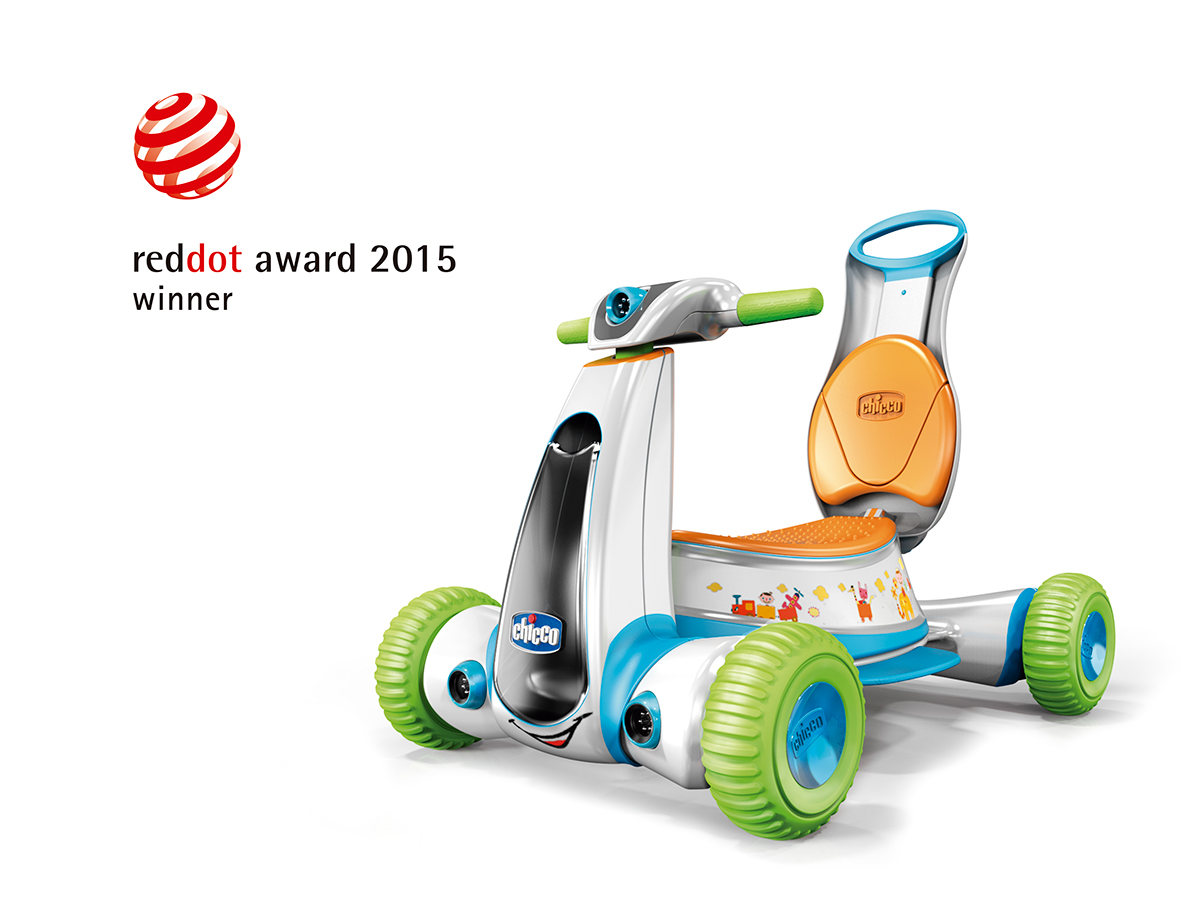
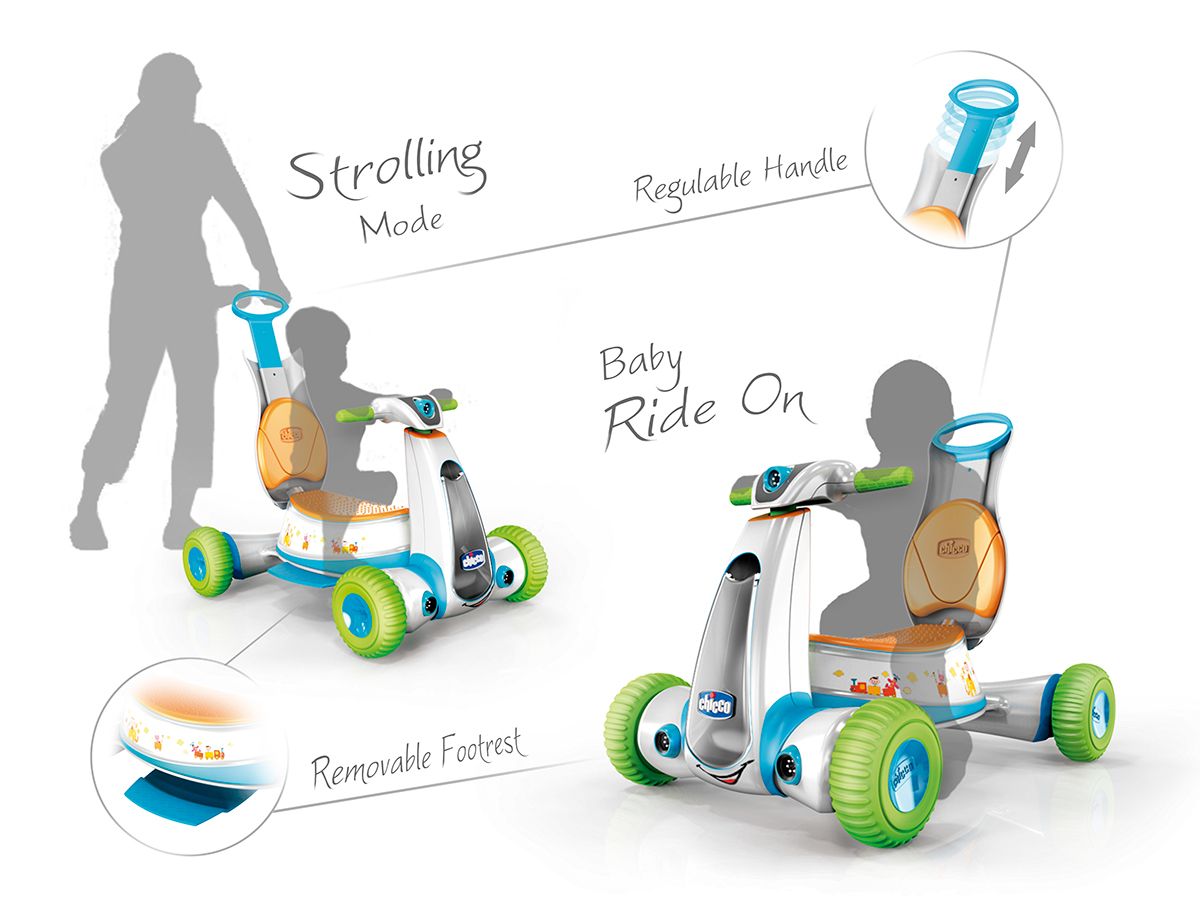
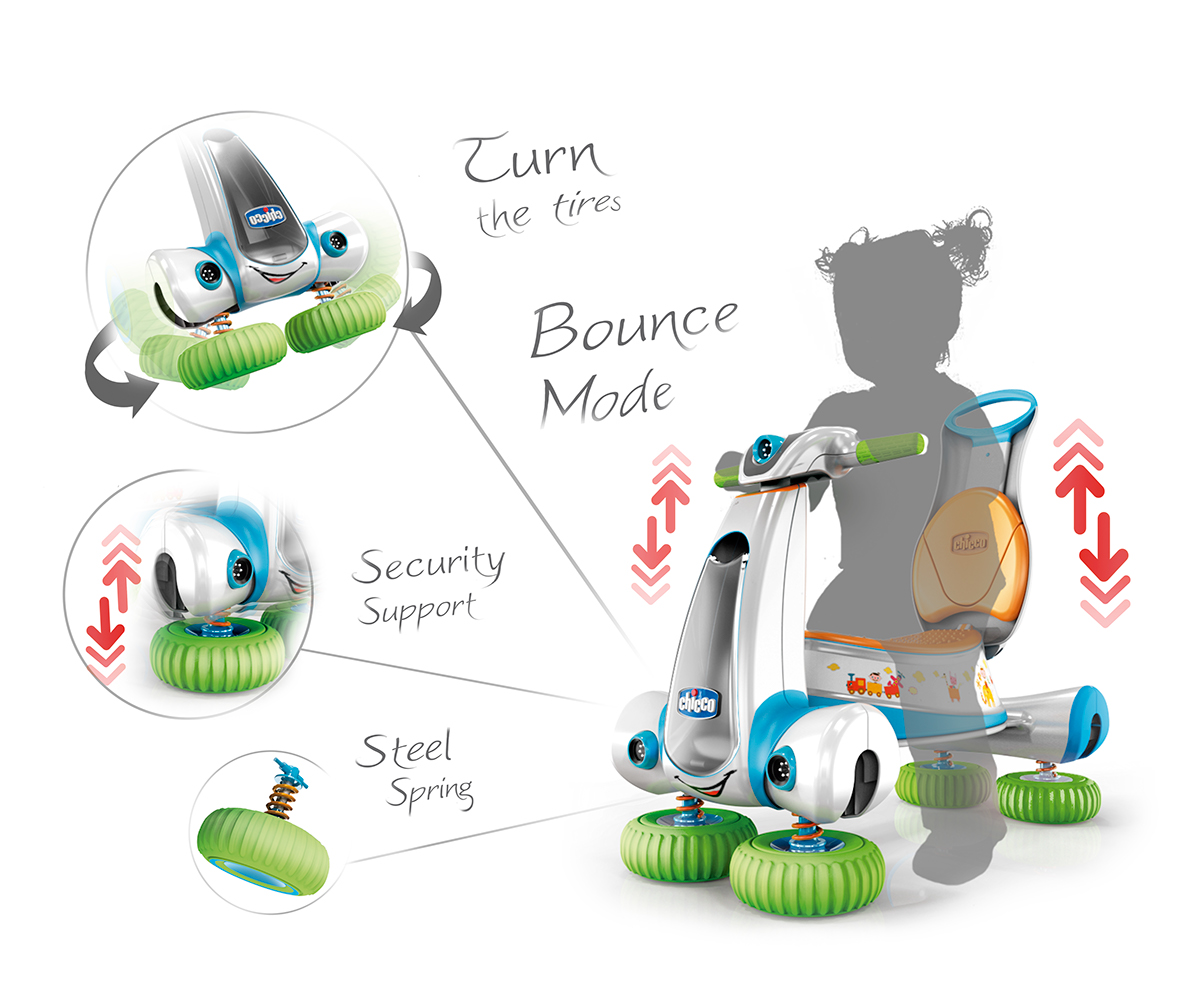
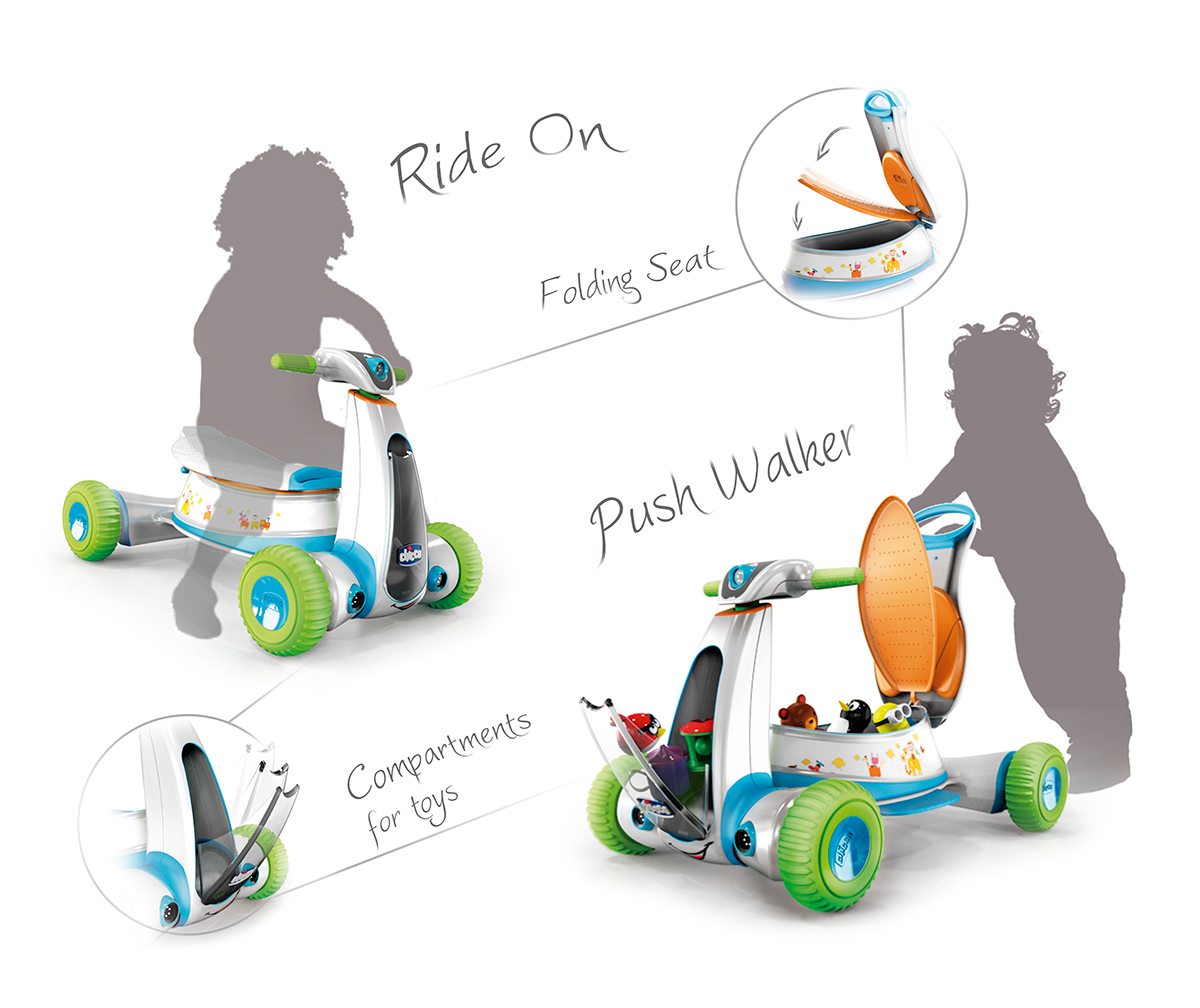
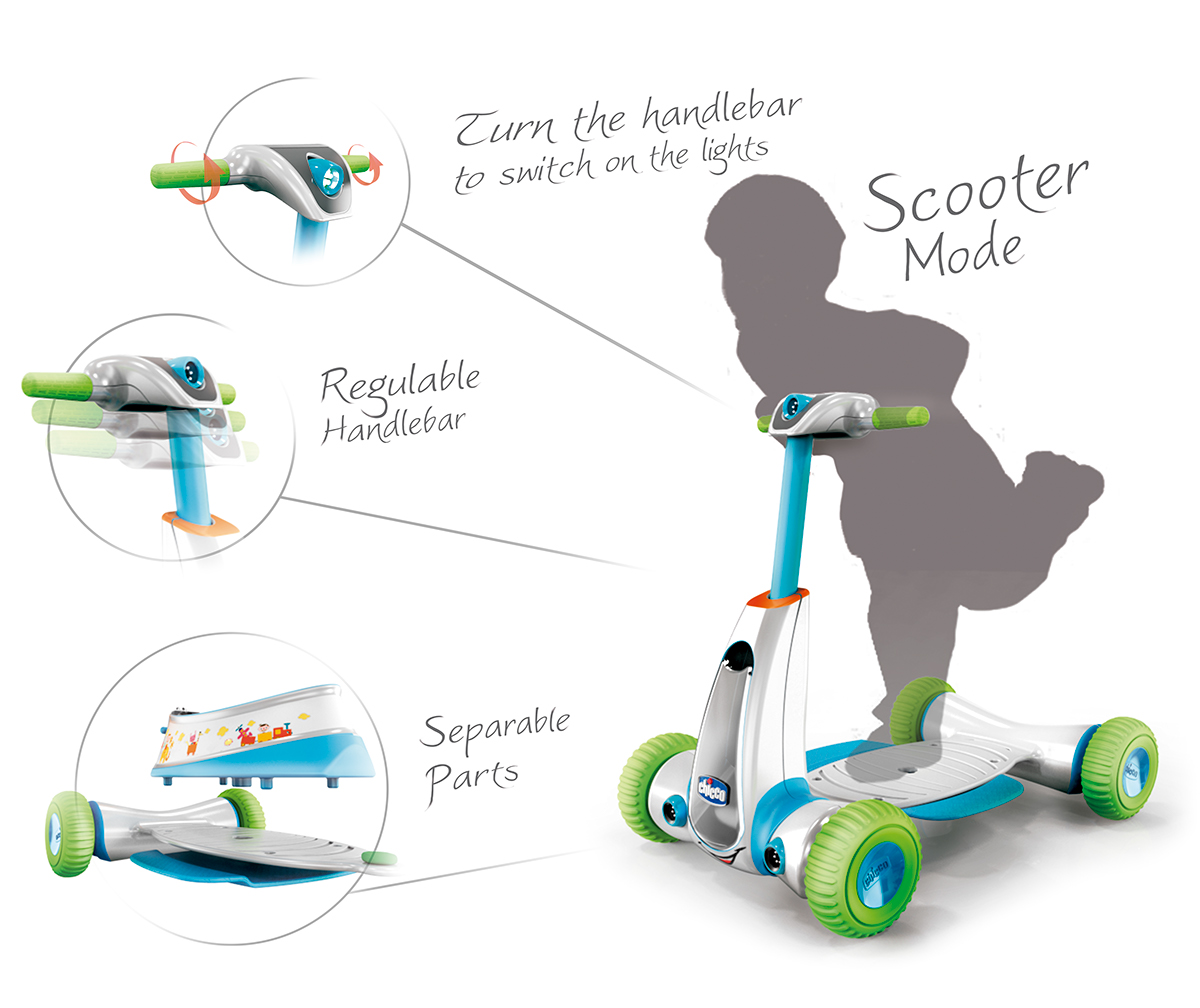
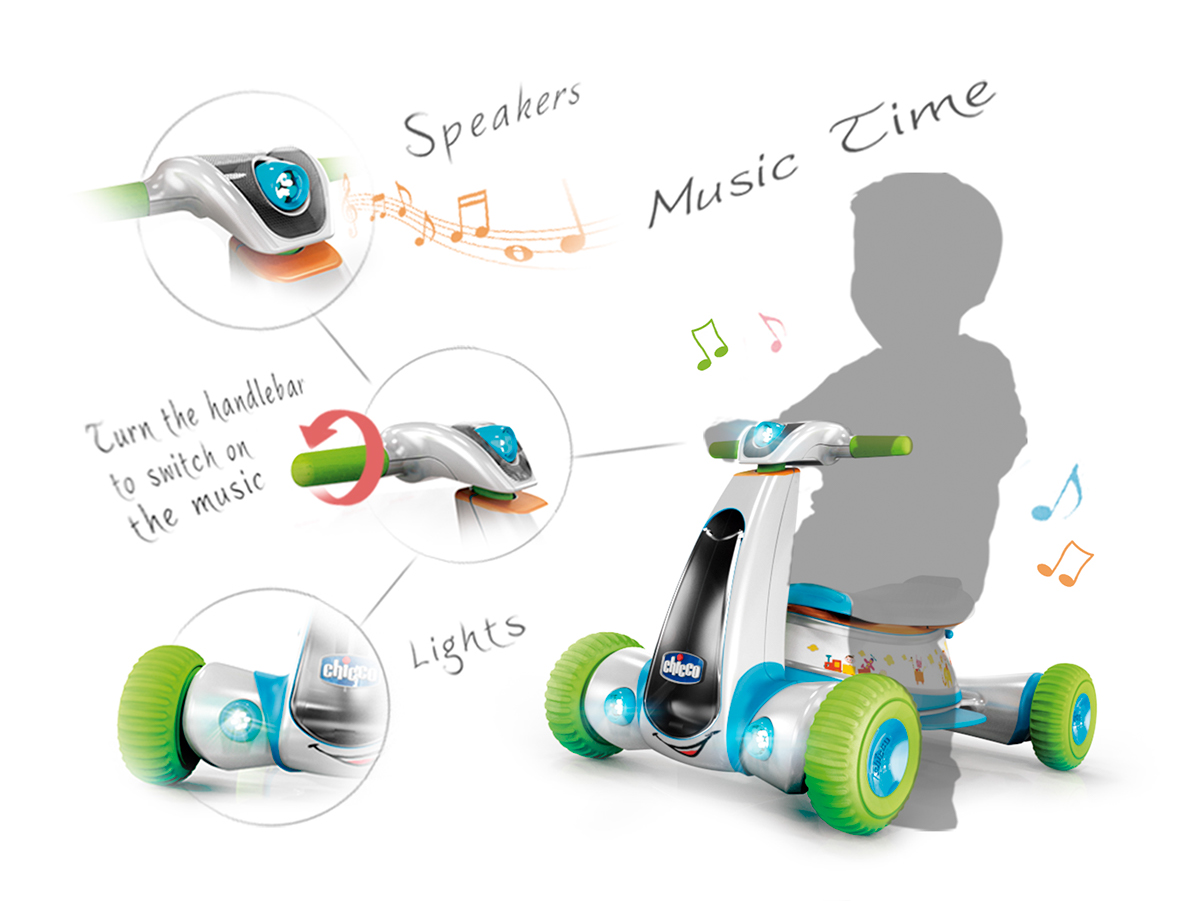
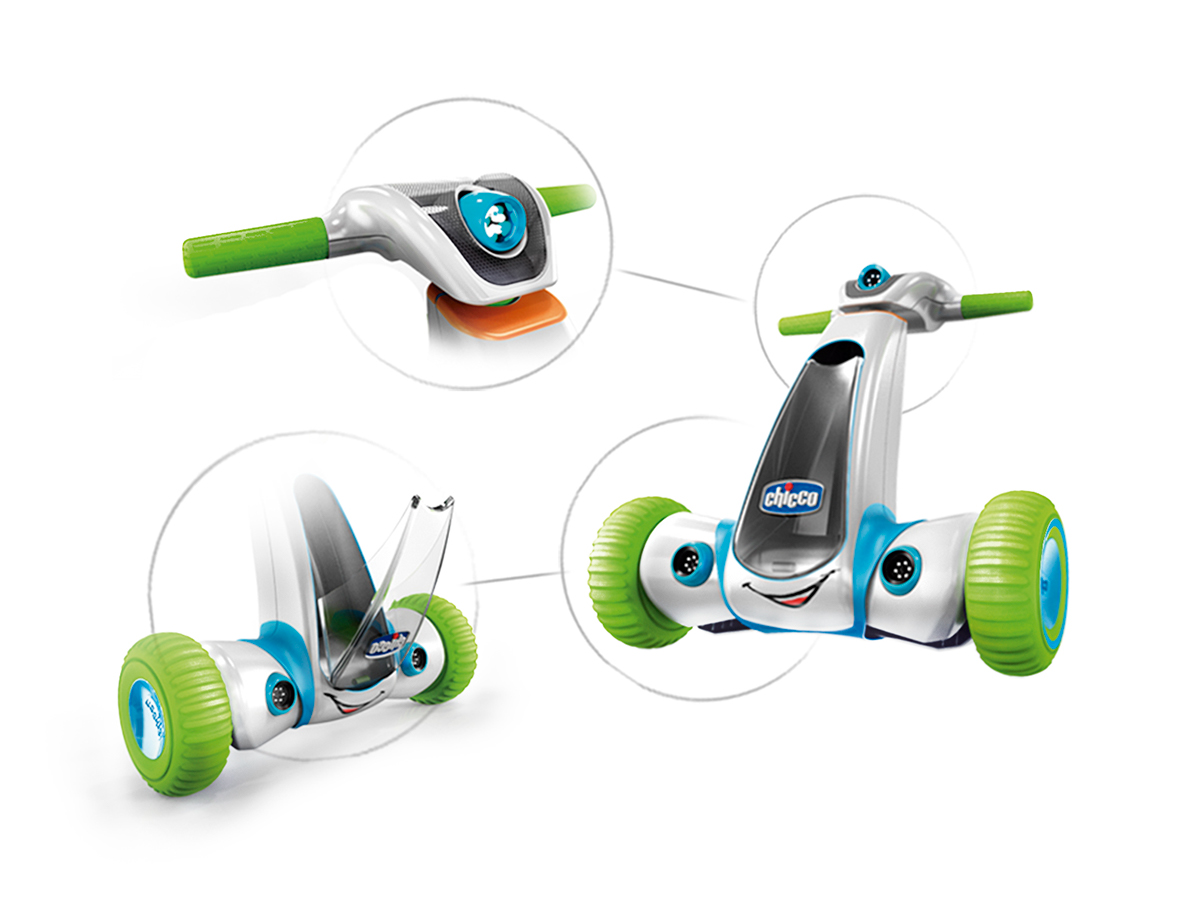
Chicco Ride On
Narkii:
您提到,一直將設計專注于面向拉美市場,請問這個市場的優勢是什么?您是如何最快抓住一個市場的需求呢?
As you mention, you always focus your designs on the Latin American market. What is the advantage of this market? How do you catch the demand of a specific market in a short time?
Ernesto:
拉美市場所具有的巨大優勢在于,它還有許多東西等著被探索,這里消費的大部分產品都是進口的,它們并不總是完全適應人體工程學,人體測量學,理想或文化需求,因為拉丁美洲在所有這些方面與美國,歐洲或亞洲完全不同。設計師所具有的批評眼光讓我能夠快速識別這些需求,因為我是拉丁美洲人,這些也是我的需求,而且我可以在日常體驗中發現改善的機會。例如,拉丁美洲人不像美國人消費那樣大,而是看重產品在長期內的質量,只做一次特別的投資。
The great advantage that the Latin American Market has is how little it’s been explored, for the most of the products, here consumed, are imported and they not always adapted completely to the ergonomic, anthropometric, aspirational, or cultural needs, as the Latin American is completely different in all of these aspects to the American, European or Asian. The designer’s critic eye allows me to identify quickly these needs, as I am a Latin American, these are my needs as well, and I can spot the improvement opportunities on a day-to-day experience. For instance, the Latin American is not a big consumer as the American and values much more the quality of a product in a long term with just one unique investment.
Narkii:
您認為什么樣的設計才是好設計?
How do you define a good design?
Ernesto:
對我來說,好設計就是在日常生活中不容易被注意到的產品,它與你的生活方式和需求很好地融合在一起,成了你的外延,為你帶來新的體驗。我欣賞以交互為中心的產品,比如,蘋果產品的設計就是讓用戶專注到與屏幕的交互上。
For me a good design is the one that goes unnoticed on your day-to-day, that integrates so well to your life-style and needs that ends up becoming an extension of you, to have all kind of new experiences. I am an admirer of the products centered in the interaction with the user, for example, Apple products are designed in a way that the user only focusses the attention in the interacting mean, which is the screen.
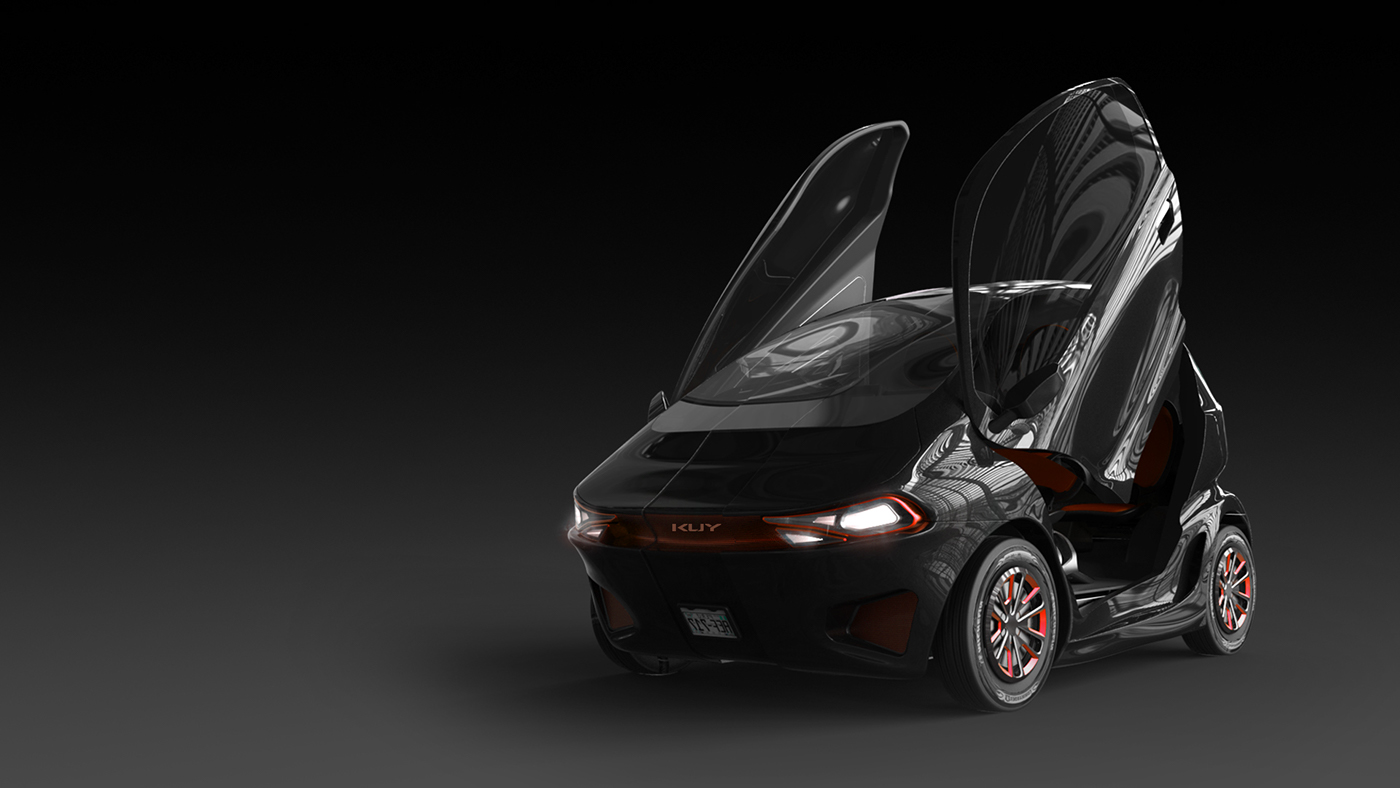
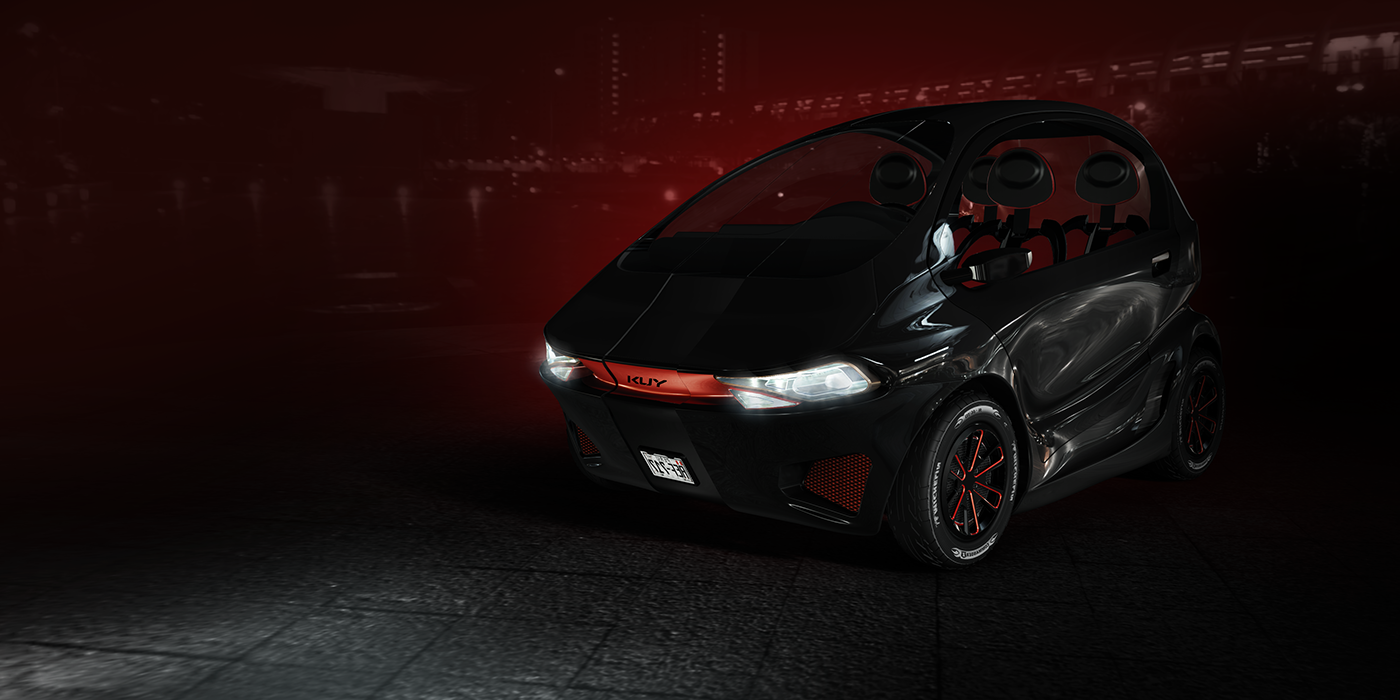
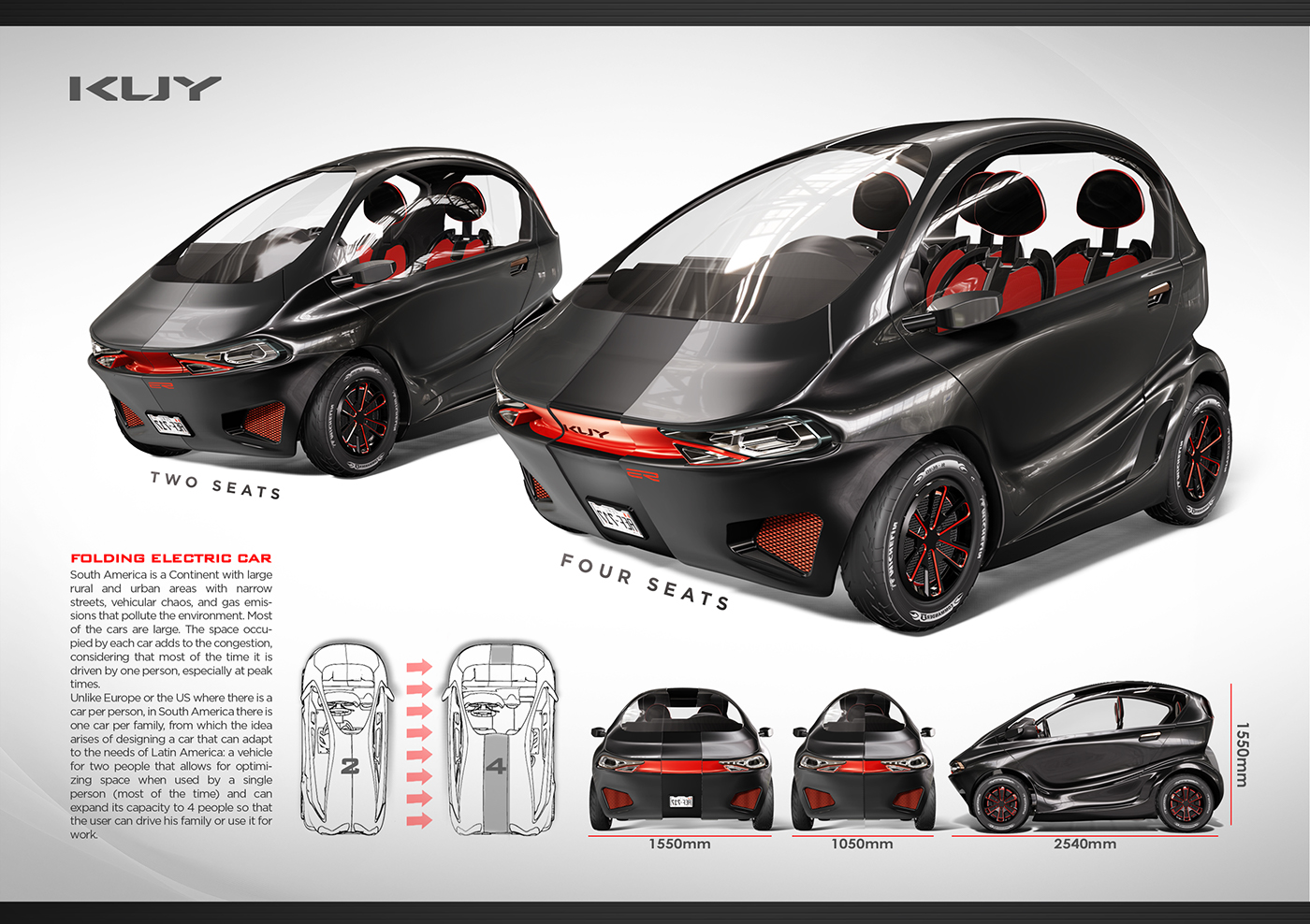
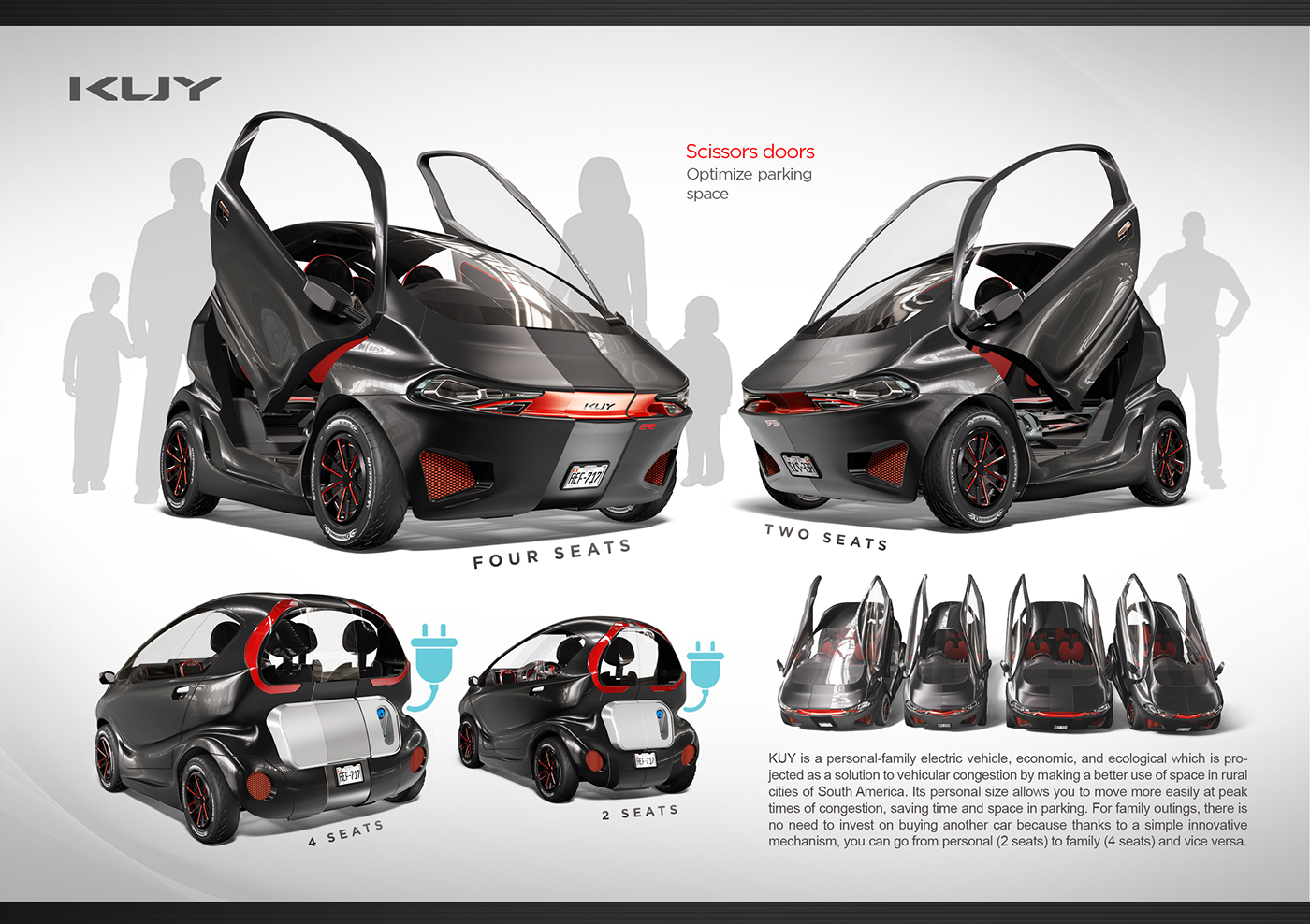
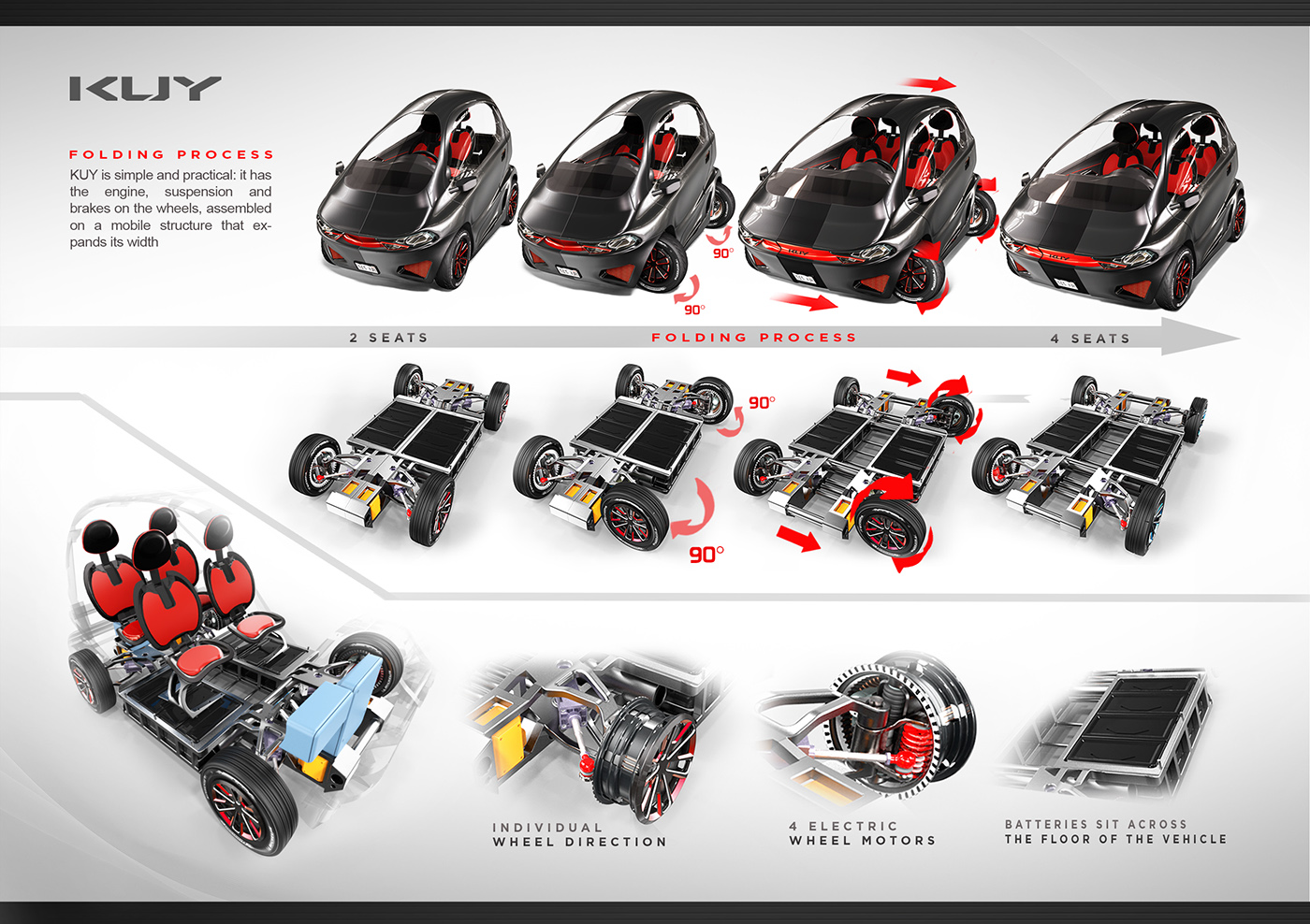
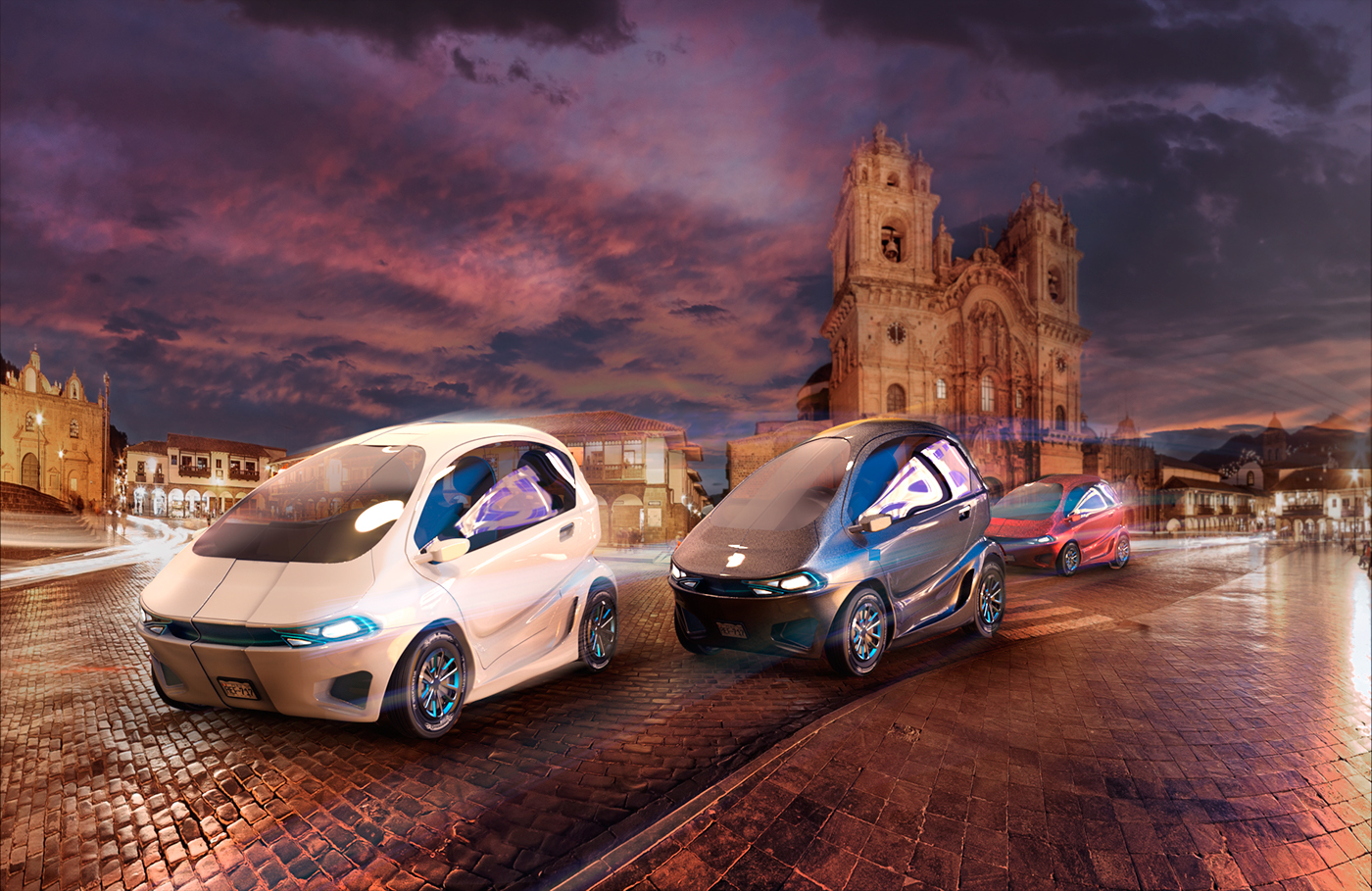
KUY - Folding electric car
Narkii:
平時有什么愛好嗎?這些愛好有給您帶來什么靈感嗎?
What is your hobby? Do you get inspiration from it?
Ernesto:
其實我一直都從周圍的一切中獲得靈感。 2003年我12歲時,從庫斯科來到利馬,一直住在離馬格達萊納市場兩個街區的地方,在這個地方我成了鄰家小孩,向往著圣馬丁·德·波雷斯,喜歡開玩笑,喜歡在市場上散步,踢足球,跳舞,參加派對,以及,家人對我是最重要的。換句話說,這里的生活塑造了我的個性,我在設計能夠適應我國人民的需求和習慣的產品時我很驕傲地展示自己的這一部分,甚至在新加坡的紅點設計大獎頒獎現場中跳薩爾薩舞,我所居住城市的方方面面都反映了那里的人們,無論好與壞。
Actually I get my inspiration constantly from everything that surrounds me. I came to Lima from Cusco in the year 2003, at the age of 12 and I have always lived two blocks away from the Magdalena marketplace, a place that embraced and raised me as a kid-next-door that is devote to San Martin de Porres, a kid who loves to joke, take a walk in the market, play football soccer, dance, go to a party and most of all, to keep my family as the most important thing. In other words, living here has defined my personality, which I show with pride when I design products that can be adapted to my people’s needs and usages, or even dancing salsa at the Red Dot Design Award in Singapur, for each aspect in the city where I live, reflects the people that live in it, the good and bad.
Narkii:
秘魯設計業為設計師們提供了怎樣的環境?
What kind of environment for designers does design industry provide in Peru?
Ernesto:
在秘魯,工業設計職業只出現了幾年的時間,但由于全球化,經濟增長以及大公司需要提高競爭力,它漸漸地在工作環境中為人所知。的確,目前我國還沒有一個發展很多產品的產業,但發展出大規模消費產品的潛力巨大,最重要的是我們有很大機會可以復興我們的部分文化遺產,發展能夠滿足及盡可能幫助人們的自有品牌線。
In Peru, the Industry Design career has just few years but it’s becoming well-known little by little in the working environment thanks to the globalization, the economic growth and the need for the big companies to have a competitive leverage. It’s true that at the moment, our country doesn’t count with an industry that develops many products, there is a huge potential for developing products of massive consumption and most important the great opportunity to resume part of our cultural legacy to develop an own-design line that answers the needs and mostly help our people’s development.

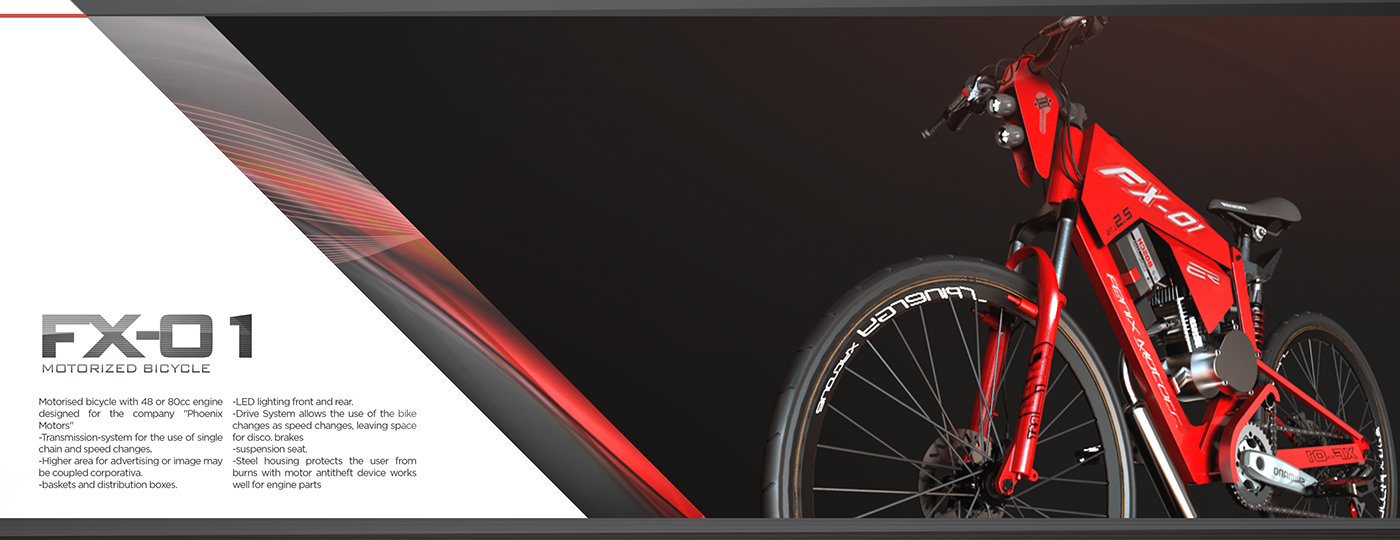



Bicimoto FX-01
Narkii:
最后,對剛剛起步的設計師說點什么吧。
Any final messages to those just starting out?
Ernesto:
我想對這些在當下大環境中因為自身職業并不為人所知而感到不之所錯的秘魯年輕設計師說點話。作為設計師,我們有責任提高意識,并讓當地市場明白工業設計師的潛力,我們可以開發有形和無形產品,這些產品不僅可以帶來競爭優勢,而且最重要的是可以讓人們更好,改善他們的生活方式。
我最初是在一家秘魯的大規模消費跨國公司工作,從事來自戶外設計機構(美國,法國,意大利等)的裝瓶和包裝工業設計中介。我的職責與設計管理有關,但是我對設計的渴望使我提出了大量的設計,這些在最開始的幾年被拒絕了,主要原因是公司缺乏與當地設計師合作的知識和安全感。最后,經過長期的堅持,我有機會開發了一個上市的項目,消費研究里表明,它遠遠超過了外國設計機構的設計。這是公司開始用內部工業設計開發更多產品的突破點,為未來的發展創造了內部方法,因為通過內部設計,成本和期限可以得到最優化。這不是一件容易的事情,但向當地市場展示秘魯設計的潛力要靠我們。
My message is to the Peruvian young designers that can feel overwhelmed by the current situation in our country where our career in the working environment is not so well-known. It is our responsibility as designers to raise awareness and to teach the local market the potential of an Industry designer to develop tangible and intangible products that can generate not just competitive advantages, but most important yet, the development of the people and improvement of their life-style.
I started working in a Peruvian transnational company of massive consumption who worked on the mediation of industrial designing of bottling and packaging from outdoor design agencies (USA, France, Italy, etc). My duties were related to the design administration, but my urge to design made me present a large quantity of designs that, at first were rejected during a couple of years, due mostly to a lack of knowledge and insecurity of the company to work with a local designer. In the end, after a long persistence, I had the opportunity to develop a project that was launched to the market after surpassing by far in the consumption studies, the designs of the foreign agencies. This was the breaking point for the company to start developing more products with an in-house industry design, creating an internal methodology for future developments, because with an in-house design, the costs and deadlines could be optimized. It’s not an easy task, but it depends on us to show the local market the potential of the Peruvian design.
本文為藝家人原創,如需轉載請注明出處